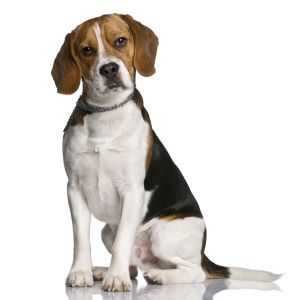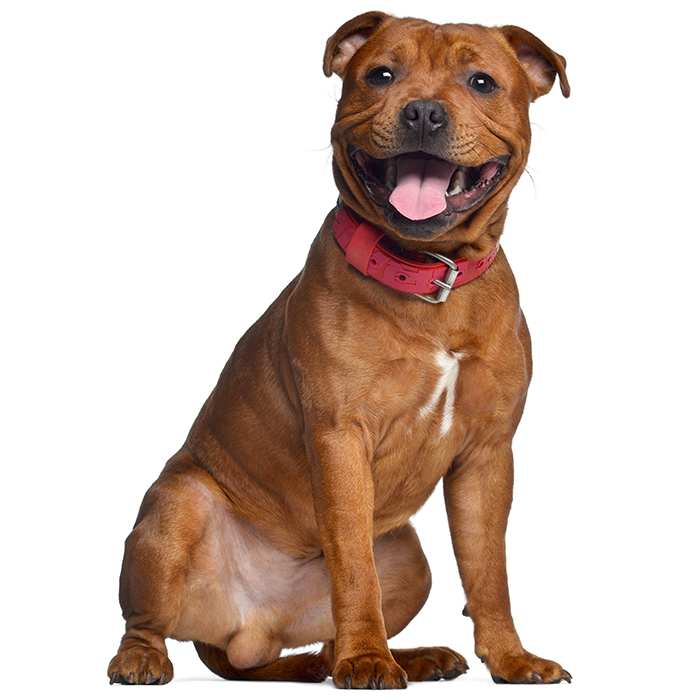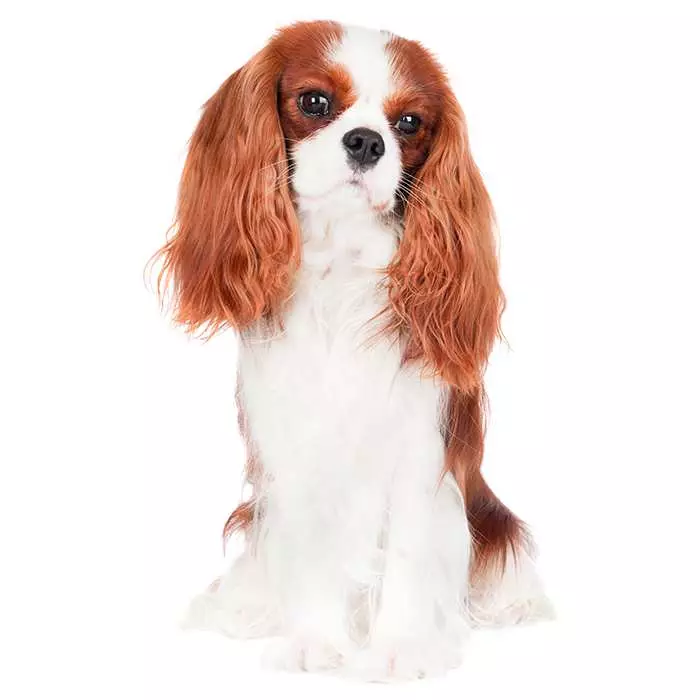Maltese Shih Tzu
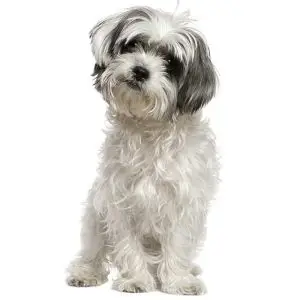

| Recommended for | Families with kids of all ages, singles, older people |
| Breed Classification | Hybrid / designer breed |
| Other names | Mal-Shi, Maltese Shitzu |
| Lifespan | 12-14 years |
| Size | Toy |
| Temperament | Gentle, friendly, loyal |
| Intelligence | Average |
| Tendency to bark | Above average |
| Maintenance Level | Low-Medium |
| Health Risk | This breed has an around average probability of having health issues in its lifetime, hence it is one of the more affordable breeds to insure. |
Insuring a Maltese Shih Tzu?
Get our award-winning Nose-to-Tail Cover with up to $30k annual benefit limit, up to 90% of eligible vet bills back, and no sub-limits.
Get a quick quote
Is this breed right for you?
Try our breed selector quiz to find out your best matching breed!
Insuring a Maltese Shih Tzu?
Get our award-winning Nose-to-Tail Cover with up to $30k annual benefit limit, up to 90% of eligible vet bills back, and no sub-limits.
Get a quick quote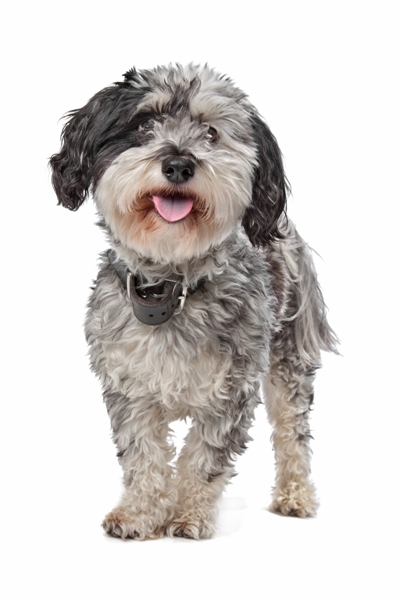
Breed history of Maltese Shih Tzus
The Maltese Shih Tzu was developed in the 1990’s by cross breeding a Maltese and a Shih Tzu in order to produce a small, low-shedding companion dog with a good-natured and outgoing temperament.
Although a new hybrid breed, the histories of its two parent breeds go back a long way. The Maltese dog first appeared in Europe as far back as 500 BCE, and it is believed this ancient breed originated in Asia. It was very popular throughout the Middle Ages among European nobles and often served as lapdogs in many a royal court.
The Shih Tzu is one of the oldest known breeds of domesticated dogs and is originally native to Tibet. Known to have been kept as companion animals as far back as 1000 BCE, the breed was especially popular with Chinese nobles and royalty. The Shih Tzu was first introduced to Europe as late as the 1930’s and to the USA only after the Second World War.
The cross breeding of the Maltese and the Shih Tzu is considered to have been a great success, and despite not being completely non-shedding, the Maltese Shih Tzu sheds far less hair than its parent breeds. The popularity of the Maltese Shih Tzu has sky-rocketed in Australia in recent years and is quickly gaining notoriety in the United States, where it is commonly known as the ‘Mal-Shi’.
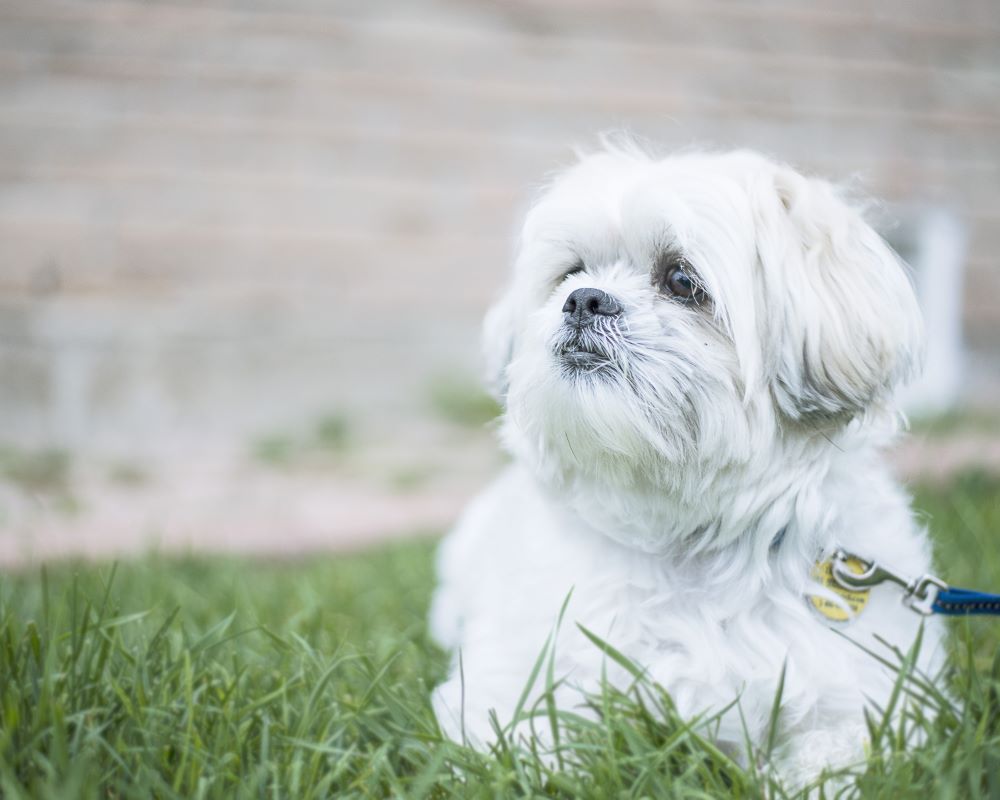
Physical description of Maltese Shih Tzus
The Maltese Shih Tzu has no official breed standard and the appearance of each animal can vary. Generally, they are very small sized dogs with a small, rounded head and a short muzzle. They tend not to have the bulging eyes and stubby nose of the Shih Tzu, nor the long hair of the Maltese.
Generally their coat is white or white with tan markings on the body and ears, but they can sport a combination of other colours, such as black, brown, black and white, brown and white, and black and brown.
The coat is medium in length, thick, soft and silky in texture, and it should have some wave to it, but should never be curly.
| Weight range | 3 to 6 kg |
| Height range | 20 to 30 cm |
| Colours | White or white with tan markings |
| Coat length | Medium |
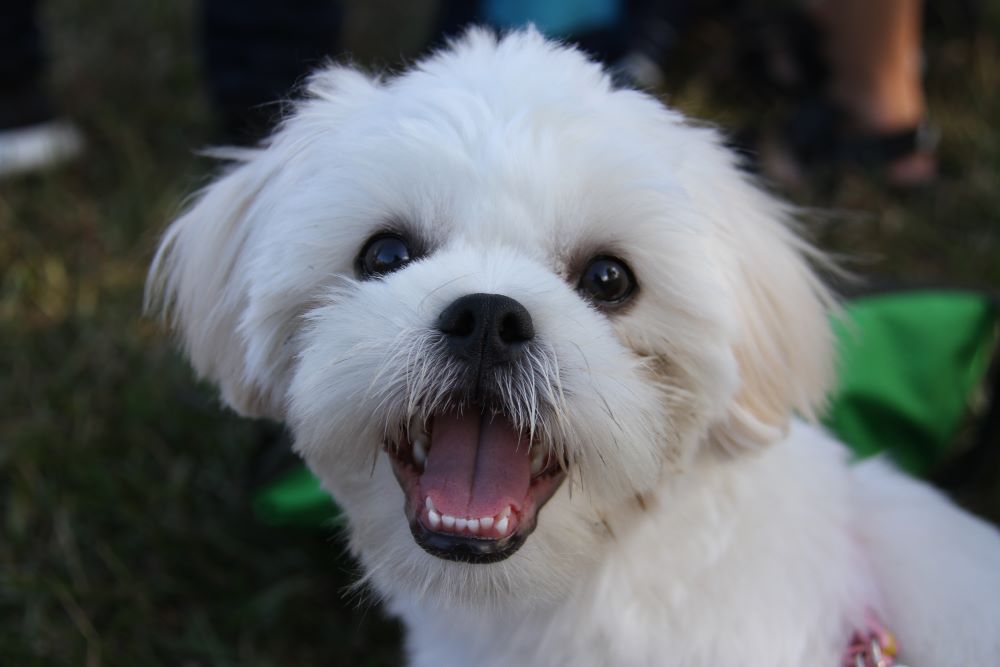
Maltese Shih Tzu personality and temperament
Playful, affectionate, relaxed, cheerful, confident and gutsy, the Maltese Shih Tzu is considered to be more tolerant and better natured than the Maltese. Known as the ‘friendly toy’, their well-rounded temperament makes for a great family companion.
Being extremely people-orientated and very loyal, Maltese Shih Tzus require a great deal of human attention to remain happy. The breed thrives on human contact, whether it be game-playing, going for walks, or simply being included in day-to-day activities around the home.
The more they can be carried around or sit on your lap, the happier Maltese Shih Tzus will be, making them a popular choice for retired people and those who are home a lot or can take the dog with them when they go out. However, being overly carried around and babied can lead to the development of so-called “small dog syndrome”, where the dog has an overabundance of confidence and bravado for its small size.
Behavioural problems have been known to occur in Maltese Shih Tzus that are either overly spoilt, under-stimulated or left unto their own devises for extended periods of time, including issues such as separation anxiety, excessive barking, snappiness and destructiveness around the home.
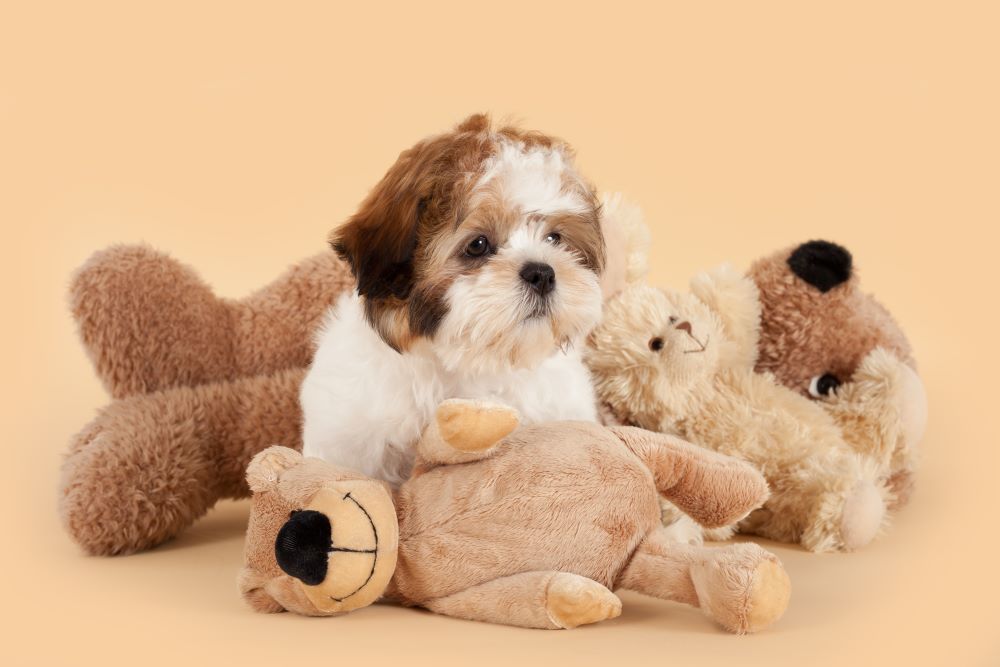
Maltese Shih Tzus with kids and other pets
Maltese Shih Tzus have a good reputation for being highly tolerant of kids of all ages and will happily play along with them. They are friendly dogs who make excellent companions for older, more considerate children, but who also love the small kids.
The breed is cheerful and good-natured and will often live harmoniously with other pets in the home, regardless of species. As with all breeds, it’s best to socialise them as a puppy; this will help to curb any potential disharmony later on.
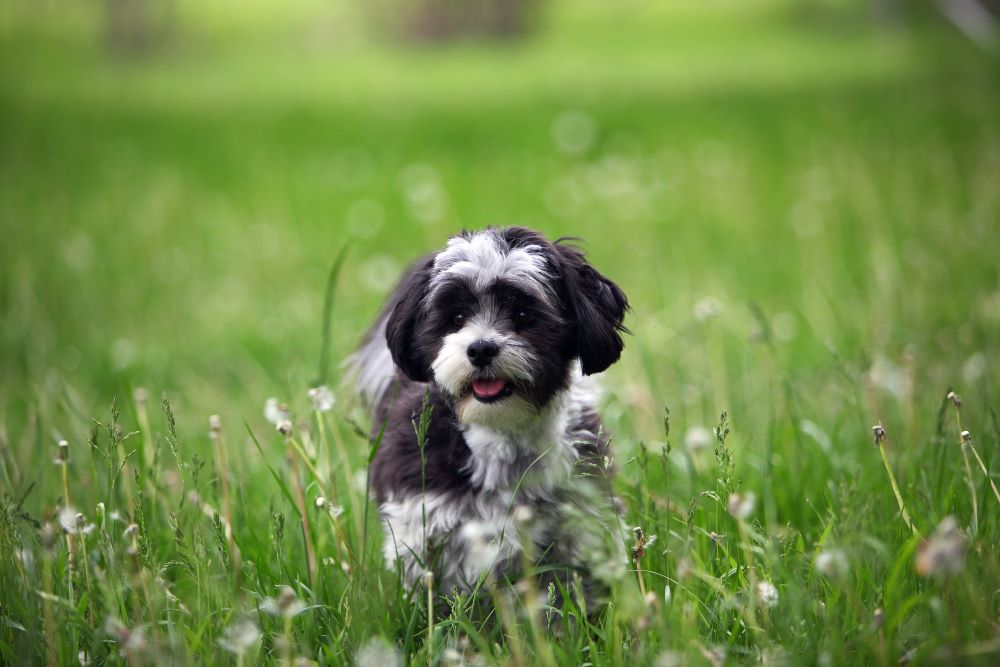
Maltese Shih Tzu training and exercise
Although active and playful, Maltese Shih Tzus don’t need a great deal of exercise. They should have regular walks, but are also happy to exercise themselves in the backyard.
Clear and straightforward training from an early age, paired with fair and consistent discipline from a strong pack leader, are essential for good behaviour.
A spoilt and poorly trained Maltese Shih Tzu may develop bad behavioural habits such as barking and snappiness.
| Energy level | Medium |
| Exercise requirements | Medium |
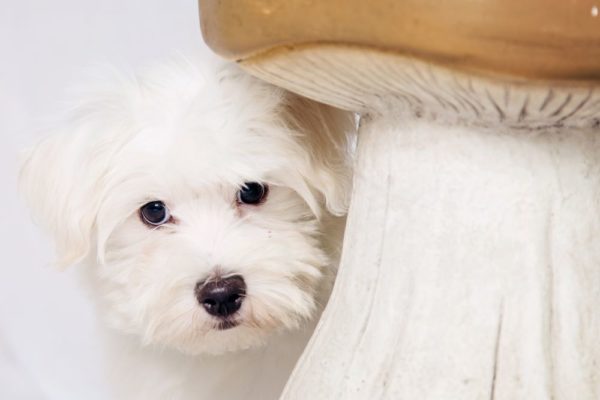
Maltese Shih Tzu feeding and nutrition
The Maltese Shih Tzu should do well on a high-quality dog food that is appropriate for its age (puppy, adult, or senior), size and activity level.
They can become overweight so it’s important to monitor their weight and calorie consumption. Avoid feeding table scraps or overindulging them with treats.
Check with your vet if you have any concerns about your dog’s weight or diet.
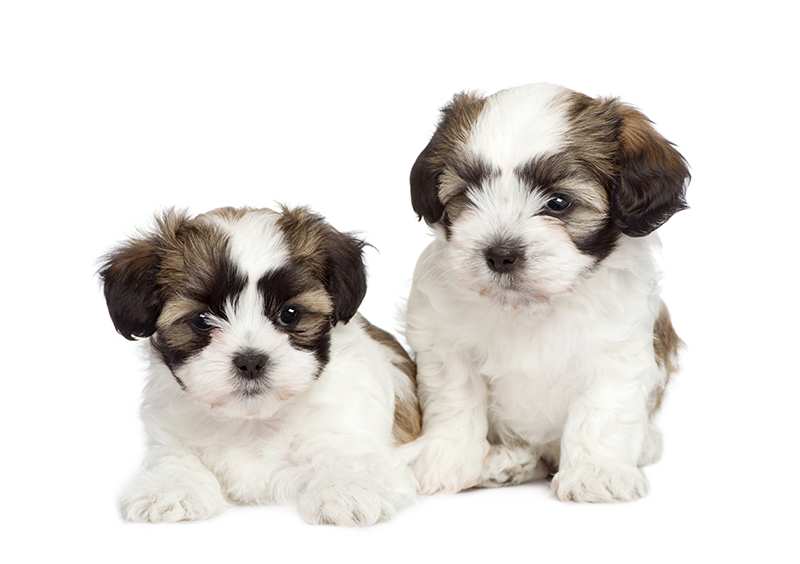
Maltese Shih Tzu care and grooming
While marketed as the dog that doesn’t shed, this is not entirely true. While the Maltese Shih Tzu sheds less than many other breeds, it does still shed, so grooming is still required. It is not as allergy friendly as some of the other new hybrid dog breeds.
The fine Maltese Shih Tzu coat requires frequent care, including daily brushing to keep out tangles and mats. Regular bathing will keep the coat soft and silky.
They can be clipped every six to nine weeks in order to make grooming a bit easier, but will still need to be brushed weekly at a minimum.
Maltese Shih Tzus can have some problems with tearstains under the eyes, which may need to be treated with commercial tearstain removers. Keeping the area around the eye clean can help to reduce staining.
Health issues for Maltese Shih Tzus
- Hypothyroidism occurs is when the thyroid gland doesn’t produce adequate amounts of thyroid hormone, usually because of inflammation. Some symptoms of Hypothyroidism include abnormal weight gain, dry skin, hair loss, ear infections, and lethargic behaviour.

- Intervertebral Disc Disease occurs when the disc between the vertebras becomes damaged, causing swelling and leaking. Common symptoms include: inactivity or lethargic behaviour, shivering, limping, or the inability to bend down to eat. If you notice these behaviours, get in touch with your vet.
- Brachycephalic Airway Obstruction Syndrome (BOAS) affects breeds with shortened muzzles. The effects of brachycephalic airway syndrome are especially noteworthy in smaller dogs. It is a major concern in hot Australian weather and can result in attacks of severe respiratory distress.
- Hip Dysplasia occurs when the hip joint doesn’t form properly and the ball doesn’t fit snugly into the socket, leading to possible lameness over time.
- Portosystemic Shunt of the Liver is when an abnormal connection forms in between the portal vein or one of its offshoots and another vein, causing blood to bypass or ‘shunt’ the liver. It’s usually caused by a birth defect and symptoms include poor muscle development or stunted growth. Disorientation is another sign.
Not all conditions are covered by Pet Insurance. For details of Bow Wow Meow Pet Insurance cover, refer to the Product Disclosure Statement.
Free engraved pet ID tag on sign up3
Customer Satisfaction
21 day cooling off
Easy to use Pet Portal


